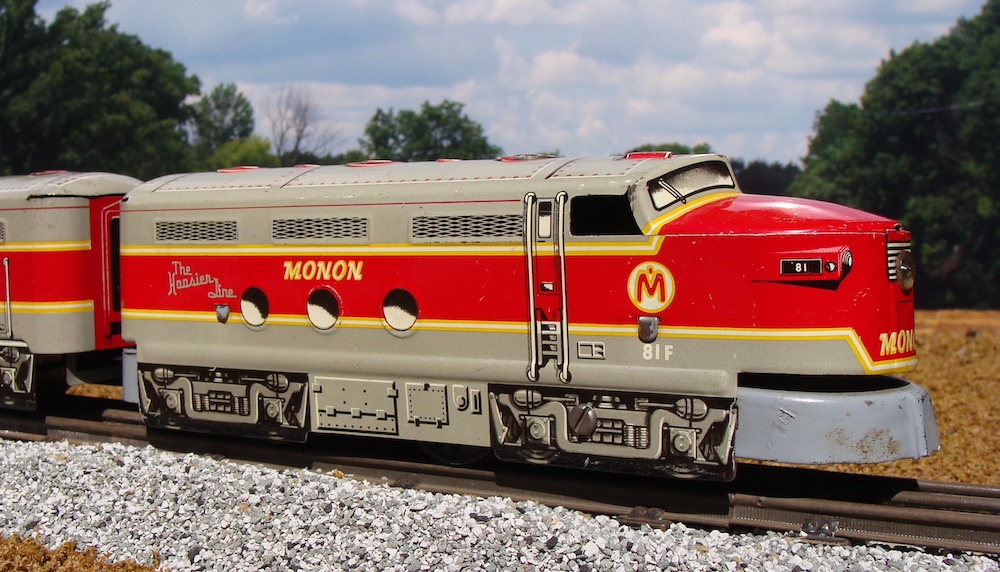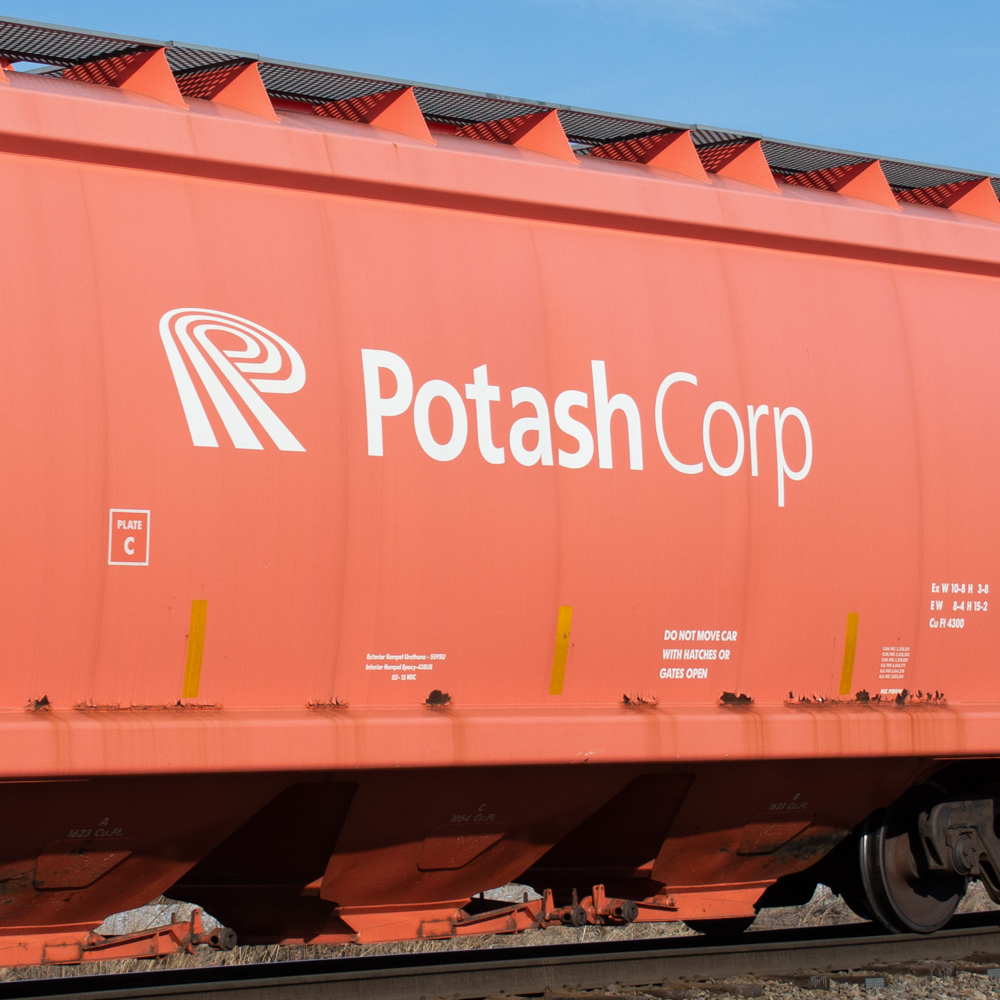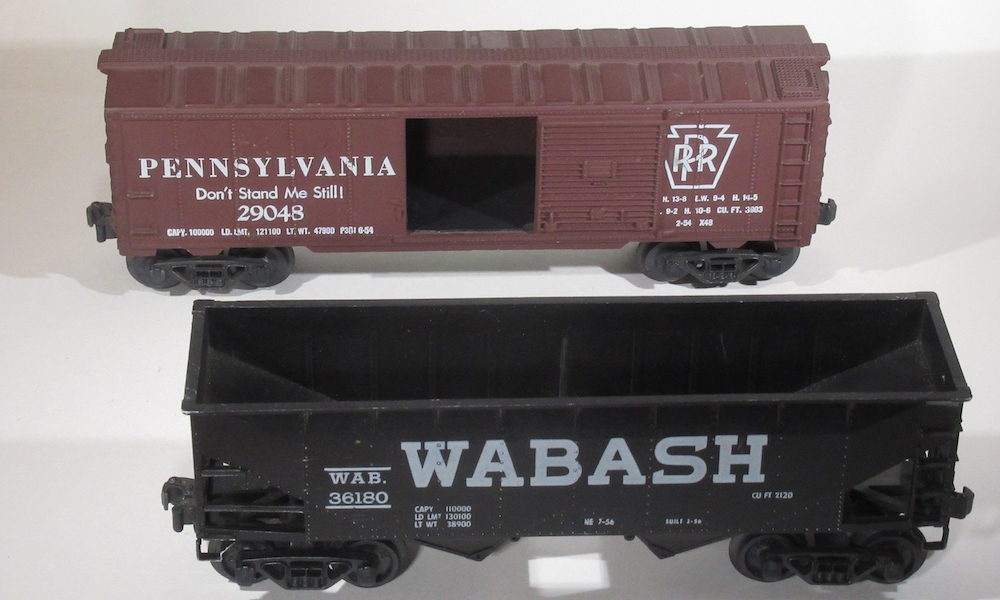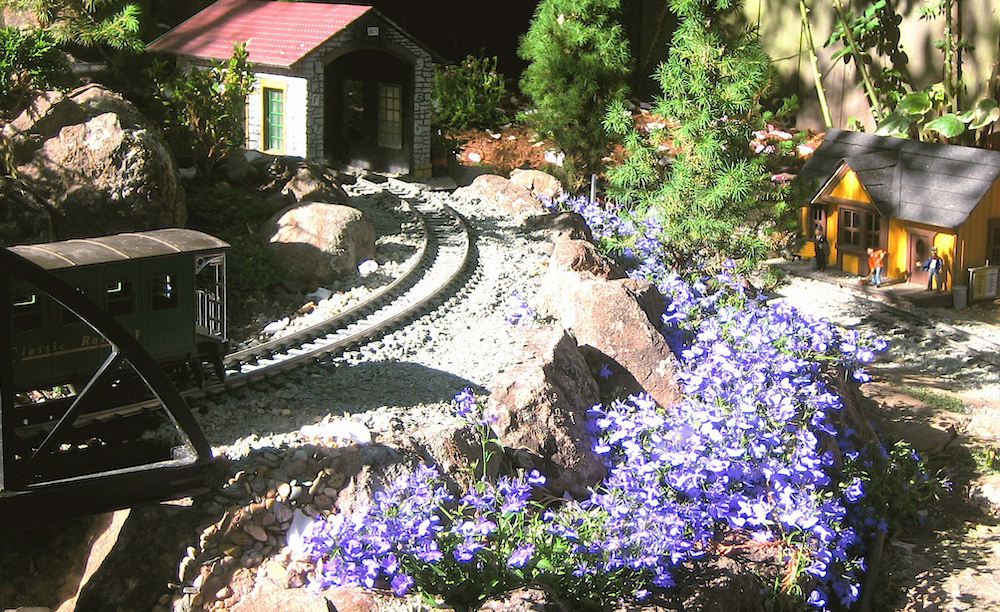Established as American Model Toys in 1948, AMT had challenged Lionel in three areas. First were streamlined passenger cars designed to be pulled by Lionel’s F3 diesels. Second, AMT brought out O gauge diesels, called F7s but more closely resembling F9s.
The final niche AMT sought to fill was the one occupied by near-scale freight cars. Lionel had all but abandoned this area, leaving Athearn and others to introduce boxcars, gondolas, and cabooses that were larger and more detailed.
Ferris had taken the plunge in 1952, announcing several boxcars in subdued yet realistic paint schemes. In addition, there were stockcars, a flatcar, a gondola, and cabooses (the last car based on a Chesapeake & Ohio prototype).
A pair of refrigerator cars was among the most colorful products in AMT’s freight car line. One promoted Gerber baby food and had blue silhouettes of animals on a white background. The second reefer came in yellow with black Santa Fe graphics.
What Kusan did with its AMT holdings
Kusan was, by the beginning of 1955, the proud owner of both the tooling necessary to produce these near-scale pieces of rolling stock and AMT’s inventory. McLain, a shrewd and ambitious businessman, had no wish merely to duplicate what AMT had done.
Consequently, Kusan would, over the next few years, introduce a new line of inexpensive plastic trains for younger kids. It created innovative models with lights and guns for its new military roster.
But McLain had no intention of surrendering what his firm had acquired from AMT. Some of the old freight cars received additional detailing that made them more faithful replicas of the full-sized prototypes they were based on.
A one-of-a-kind reefer
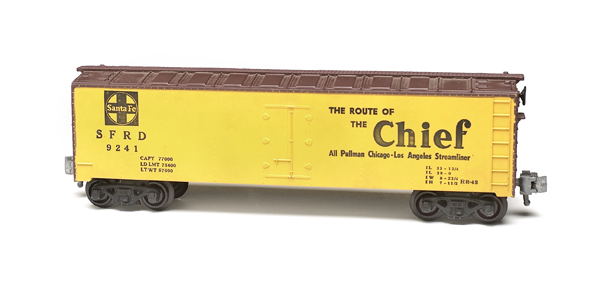
The No. 7252 Santa Fe refrigerator car developed by AMT had plenty going for it when Kusan became its new owner. Carter Collier, the designer at AMT, had used the body and other parts created for the near-scale boxcar to fashion this handsome reefer.
Collier based this O gauge model on a full-sized car. Beginning in 1947, as stated in the second volume of Santa Fe Railway Rolling Stock Reference Series: Refrigerator Cars (Ice Bunker Cars, 1884-1979), the Santa Fe had rebuilt 770 of its refrigerator cars to meet the demands of shippers.
Among the cars in class RR-43 was the No. 9241 (shown on page 155 of Refrigerator Cars). Painted yellow with Tuscan Red ends and roof, it had a black-and-white Santa Fe herald at the upper left of each side (above the car’s number), with the slogan, “The Route of the Chief,” stenciled to the right of the doors.
AMT duplicated these graphics, plus much of the lettering and car data. These touches gave its O gauge refrigerator car a realistic feel. Not surprisingly, though, the ice hatches on the roof didn’t open and the ladders and grab irons were cast into the body. At least the brake wheel was a separate part.
When designers at Kusan saw what was theirs, they likely checked the model against pictures of the Santa Fe car. That would have revealed the biggest discrepancy: AMT had painted the ends and roof white and not Tuscan Red. Kusan corrected this oversight and made a superb model better. If only they had also outlined the doors or at least their hinges in black.
Greenberg’s Guide to Kusan Trains (1987) lists the 7252 at $25 in good condition and $55 in excellent.
Buyer’s checklist:
- Broken or cracked plastic body?
- Scratched or faded lettering?
- Bent or missing brake wheels?
- Broken or missing couplers?






